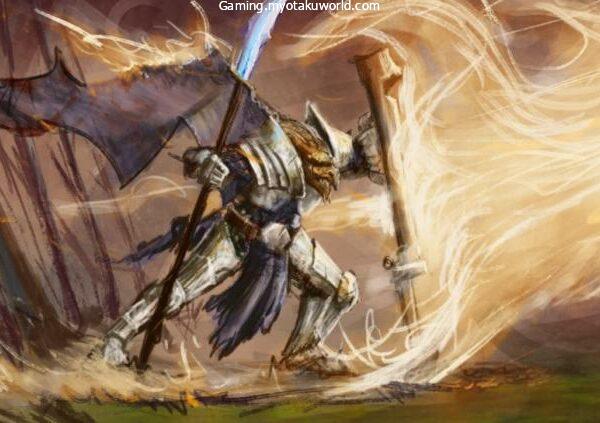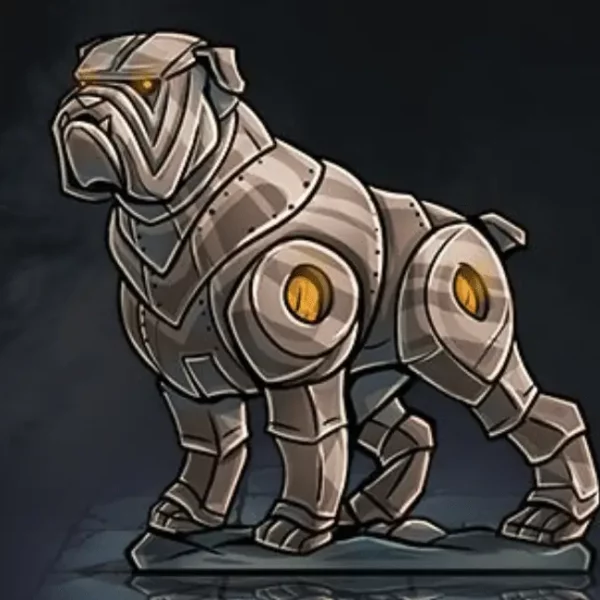In D&D 5e, both players and creatures often make saving throws when they are in dangerous situations.
Booby traps require you to succeed on Dexterity or Strength saving throws, poison requires you to succeed on Constitution saving throws, and so on.
Like Acid Splash, Grease, and Burning Hands, every spell forces its target to make a saving throw. However, one spell changes how this works.
For example, you cast Frostbite on a cruel bandit captain, but you know that he can beat the Constitution saving throw based on what you know about him.
Your spell is the only thing that stands between you and victory since his next attack will probably kill you.
You don’t have any other cantrips that could help you right now, but if you have Mind Sliver, you can make it less likely for him to succeed on the roll.
This Mind Sliver 5e guide shows you how to use an enchantment cantrip that can help you make your spells more dangerous.
Wizards of the Coast didn’t put this spell in the Player’s Handbook. Instead, they put it in Tasha’s Cauldron of Everything. It went through many changes to become what it is now.
Fans say that it is one of the best cantrips. This guide is for you if you want to find out if the claim is true.
- What is Mind Sliver in D&D 5e?
- How to use Mind Sliver in D&D 5e?
- How does Mind Sliver Work in D&D 5e?
- Example Scenario for Using Mind Sliver in D&D 5e
- Who can Cast Mind Sliver in D&D 5e?
- Classes that can Cast Mind Sliver in D&D 5e
- Subclasses that can Cast Mind Sliver in D&D 5e
- Races that can Cast Mind Sliver in D&D 5e
- Creative and Useful Ways to Use Mind Sliver in D&D 5e
- Assisting Another Spellcaster Using Mind Sliver in D&D 5e
- Optimizing Your Quickened Spells Using Mind Sliver in D&D 5e
- Optimizing the Bane Spell Using Mind Sliver in D&D 5e
- FAQs
What is Mind Sliver in D&D 5e?
The spell’s description in Tasha’s Cauldron of Everything says, “You send a disorienting spike of psychic energy into the mind of one creature you can see within range.
The target must succeed on an Intelligence saving throw or take 1d6 psychic damage and have 1d4 taken away from the next saving throw it makes before the end of your next turn.
When you reach 5th level (2d6), 11th level (3d6), and 17th level (4d6), the spell’s damage goes up by 1d6.”
Mind Sliver 5e Stats
| Level | Cantrip |
| Casting Time | 1 Action |
| Range/Area | 60 feet |
| Classes | Sorcerer, Warlock, Wizard |
| Components | Verbal |
| Duration | 1 round |
| School | Enchantment |
| Attack/Save | None |
| Damage/Effect | Psychic |
How to use Mind Sliver in D&D 5e?
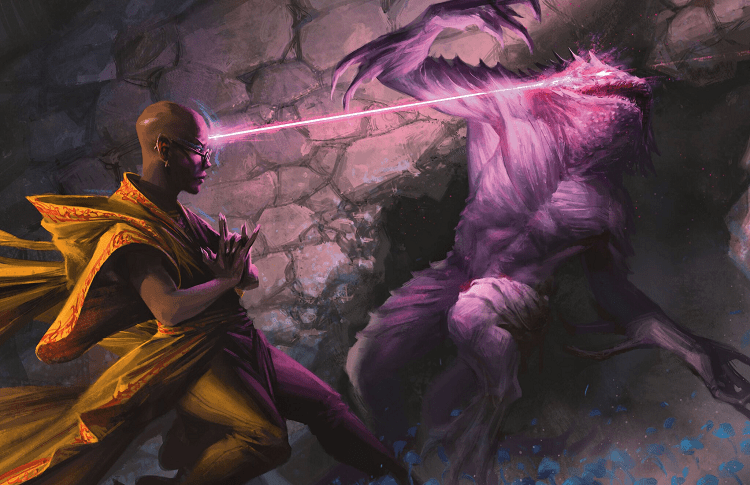
Before you can use psychic energy to throw your enemies off and make them fail their saving throws, you have to meet the cantrip’s requirements. I’ve made a list of them below so it’s easy to understand.
- You must know the Mind Sliver cantrip. Unlike leveled spells, cantrips are in your memory forever, no matter what class you are in. However, only a few select classes can pick up this cantrip for use. Read the “Who can cast Mind Sliver in D&D 5e?” section further below if you want to find out.
- You need to use your action during combat to cast Mind Sliver. If you cast this cantrip outside of battle, you can disregard this rule. Still, since Mind Sliver deals damage, you will primarily use it in combat.
- You need to speak freely in an audible voice to cast Mind Sliver. Mind Sliver requires the verbal component.
- The Mind Sliver’s target must be within 60 ft. of you. Mind Sliver has a range of 60 ft.
- You must be able to see your target to cast Mind Sliver. According to the rules of the cantrip, the caster can only target someone they can see within range.
Since it is a cantrip, it doesn’t take up a spell slot. When you meet the requirements for the Mind Sliver cantrip, you can use it. But when you cast it, you don’t have to do anything because the target has to make an Intelligence save against your Spell Save DC.
Your Spell Save DC depends on your class, but the standard formula is eight plus your spellcasting ability modifier plus your proficiency bonus.
For example, the Wizard’s ability to cast spells is their Intelligence, so their Spell Save DC would be eight plus their Intelligence modifier plus their proficiency bonus.
If you want to know what your Spell Save DC is, look at the section below called “Who can cast Mind Sliver in D&D 5e?” A spike of psychic energy tries to drive into the brain of the target. The next section explains what the target must do to avoid the effects of the cantrip.
How does Mind Sliver Work in D&D 5e?
The target of the Mind Sliver must make an Intelligence saving throw to avoid the surge of psychic energy. If they fail, the following things happen:
- The target rolls a d20 for their Intelligence saving throw.
- The target adds their Intelligence saving throw modifier to the d20 roll. The result will be their final Intelligence saving throw. The modifier is usually written in the monster’s stat block if they have it.
- The DM compares the target’s Intelligence saving throw vs. your Spell Save DC. If the target’s Intelligence saving throw is equal to or higher than your Spell Save DC, they succeed; otherwise, they fail. For more information about the Spell Save DC, read the previous section.
- If your target fails, the following occurs:
- They receive 1d6 psychic damage. Thus, roll a six-sided die to determine how much psychic damage they receive.
- If they make a saving throw before the end of their next turn, they receive a 1d4 deduction. e.g, you roll a four-sided die and subtract their next saving throw with it. After receiving this penalty, they no longer receive any more penalties while the spell lasts. The saving throw can be of any ability.
- The Mind Sliver’s damage increases depending on your level. It increases by 1d6 every time you reach levels 5, 11, and 17. For example, a level 11 Wizard will deal 3d6 lightning damage if they use Mind Sliver.
This process will be hard to understand for many people, especially new players, and I won’t be mad at them for that. When I first started playing D&D 5e, the idea of saving throws, Spell Save DCs, and other similar things also confused me.
So, in the next section, I’ll show new players how the Mind Sliver cantrip works in a way that’s easy to understand, in a controlled combat setting.
Example Scenario for Using Mind Sliver in D&D 5e

Have you ever read “Mind Sliver” as “Mind Silver” and wondered how a mind could be silver? Welcome to Arthur’s Lab, the place where I start to wonder if I am dyslexic or not.
We will test how the Mind Sliver cantrip works so that players who aren’t sure how it works can get a better idea. This demonstration is based on a carefully planned battle sequence that should be similar to yours.
Marshal the Half-elf Wizard will cast the cantrip, and a bandit will help him because the bandit “loves” to help with magic experiments.
Marshal knows the spell and is ready to give science some sharp psychic energy. Here are some important facts about the players, like the Marshal’s Spell Save DC and the bandit’s Intelligence saving throw modifier, among other things.
- Marshal
- Intelligence modifier: +3
- Proficiency bonus: +2
- Spell Save DC: 8 + 3 (Intelligence modifier) + 2 (proficiency bonus) = 13
- Bandits
- Intelligence saving throw modifier: +0
- Dexterity saving throw modifier: +2
First Scenario: Bandit Succeeds the Mind Sliver’s Saving Throw
The turn starts with Marshal, who uses Mind Sliver. As I said, you don’t need a spell slot to cast a cantrip, so Marshal can use this one without one.
The thief is 15 feet away from Marshal, which is in the spell’s range of 60 feet. The area is also well-lit, so he can see the thief.
Even though Marshal can’t see colors, he could still see him in the dark Lab because half-elves have dark vision.

Marshal can finally speak loudly and clearly enough for the verbal part of the spell. Since he has done everything the spell needs, he uses his turn to cast the Mind Sliver.
The spell makes the thief make an Intelligence saving throw, and if he fails, he will have to deal with the results. So, the thief rolls a die of 20 and gets a 15.
Since 15 is higher than Marshal’s Spell Save DC of 13, the bandit passes the Mind Sliver’s Intelligence saving throw, and nothing bad happens to him.
Second Scenario: Bandit Fails the Mind Sliver’s Saving Throw
Now it’s the thief’s turn, but he doesn’t do anything (he is definitely not afraid to step out of line). Marshal’s turn comes around again, and he still casts Mind Sliver at the thief.
The bandit has to make another Intelligence saving throw, so he rolls a d20 and gets an 11. Since his Intelligence saving throw is 0, we don’t add anything to the d20 roll.
His roll of 11 is lower than Marshal’s Spell Save DC of 13. Because of this, he fails the saving throw, and Marshal rolls a d6 to see how much psychic damage to do.
When he rolls a four, the bandit loses four HP. If the bandit was immune to psychic damage, the number would be two instead of eight. If he could not be hurt by psychic damage, the number would be 0.
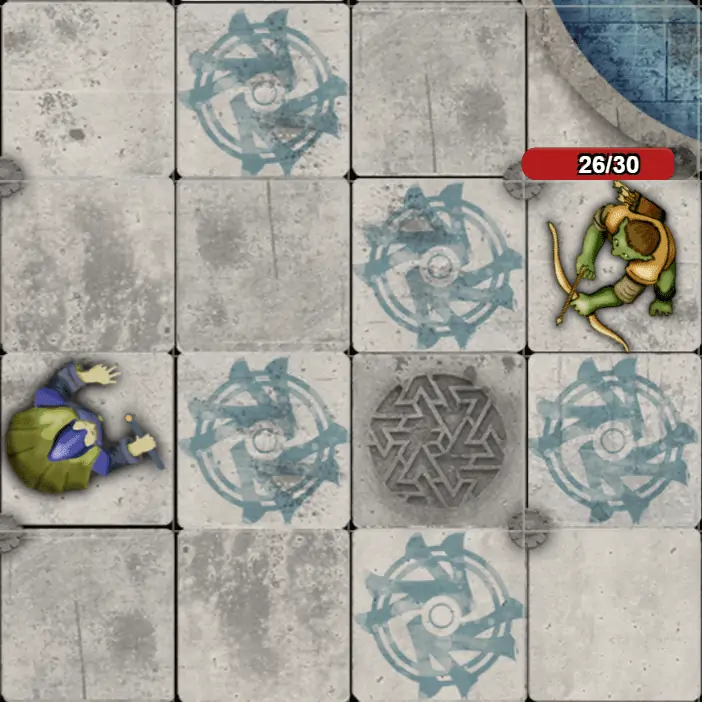
Third Scenario: Bandit Receives Saving Throw Penalty from Mind Sliver
As part of the Mind Sliver’s effects, the bandit’s next saving throw has 1d4 subtracted from it. This can happen with any saving throw ability.
We put the Oil of Slipperiness between Marshal and the bandit to show what the punishment would be in this case. If you don’t know what this item does, it copies the effects of the Grease spell.
The oil makes the 10-foot-square area covered by it hard terrain, and anyone who goes there must make a Dexterity saving throw. If they don’t succeed, they fall flat. Now it’s the turn of the thief.
He sees the Oil of Slipperiness on the ground and hesitates to go in. But we “gently” remind him of what he needs to do for this experiment. So, he reluctantly moves towards the area.

He makes a Dexterity saving throw when he enters the area where the Oil of Slipperiness is. He uses a d20 and gets a 13 for it. He has a +2 bonus to his Dexterity saving throw, and we get a 15.
Since spell scrolls have a default DC based on the spell level, the Oil of Slipperiness’s DC is based on the Grease spell’s level.
A level-one spell like Grease has a DC of 13. So, the bandit’s saving throw of 15 for Dexterity would be higher than the DC.
The bandit’s Dexterity saving throw is 15, so we need to roll a d4 to take that away. Marshal rolls a four-sided die and gets a 3.
We take 15 minus 3 to get 12, which is the bandit’s last Dexterity saving throw. Here are the steps we took to help you see how it works.
- Dexterity saving throw = d20 + Dexterity saving throw modifier – d4 (Mind Sliver effect)
- Dexterity saving throw = 13 + 2 – 3
- Dexterity saving throw = 15 – 3
- Dexterity saving throw = 12
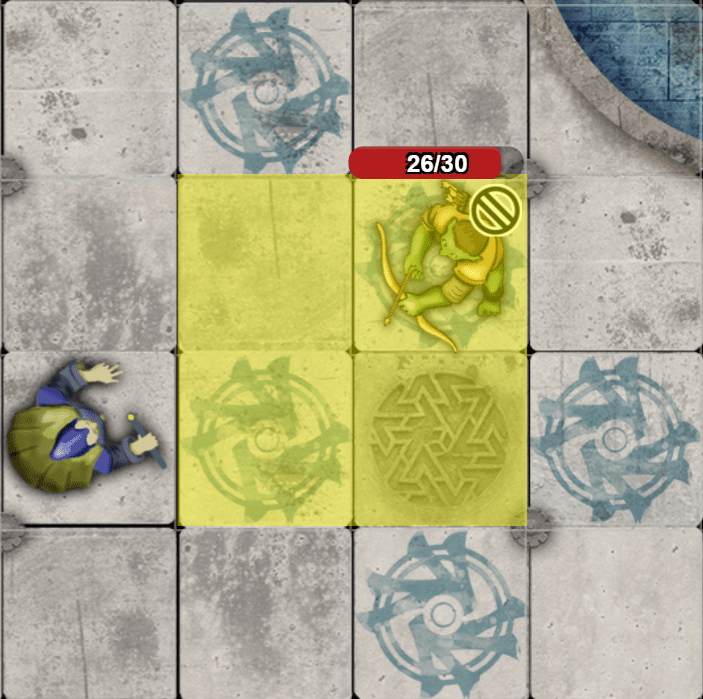
Since the bandit’s Dexterity saving throw is now 12 instead of 15, he fails the Oil of Slipperiness’s DC of 13, and he falls to the ground. He ends his turn while he is on the ground because he has given up.
Fourth Scenario: Casting Mind Sliver on a Higher Level
Arthur’s Lab is so magical that it goes against all logic. Why? With the click of a button, Marshal can become a level 13 Wizard. We do this to show how the Mind Sliver cantrip changes based on the level of the caster.
Marshal is now a level 13 Wizard, so the Mind Sliver does more damage since Marshal is now a level 13 Wizard. Due to the higher proficiency bonus that comes with levelling up, his Spell Save DC is also now higher.
Mind Sliver’s damage goes up by 1d6 every time the person who casts it reaches levels 5, 11, and 17. So, Marshal’s Mind Sliver does 3d6 psychic damage instead of 2d6 when you are above level 5 or level 11.
Now it’s Marshal’s turn, and he casts Mind Sliver again at the same bandit, who is now on the floor. The thief makes a saving throw with Intelligence, just like he did before, and gets a 15.
Marshal’s Spell Save DC has changed now that he is level 13. His proficiency bonus is now +5 instead of +2. If his Intelligence modifier stays the same, the following is how to figure out his Spell Save DC:
- Intelligence modifier: +3
- Proficiency bonus: +5
- Spell Save DC: 8 + 3 (Intelligence modifier) + 5 (proficiency bonus) = 16
Marshal’s new Spell Save DC of 16 is higher than the bandit’s Intelligence saving throw of 15, so he falls again under the Mind Sliver’s effects.
This time, 3d6 psychic damage is done to him. The rest of the spell’s effects still happen; he still has to make saving throws with a 1d4 penalty until the end of his next turn.
Marshal rolls three six-sided dice and gets 5, 2, and 4 for a total of 11. So, 11 HP are taken away from the bandit.
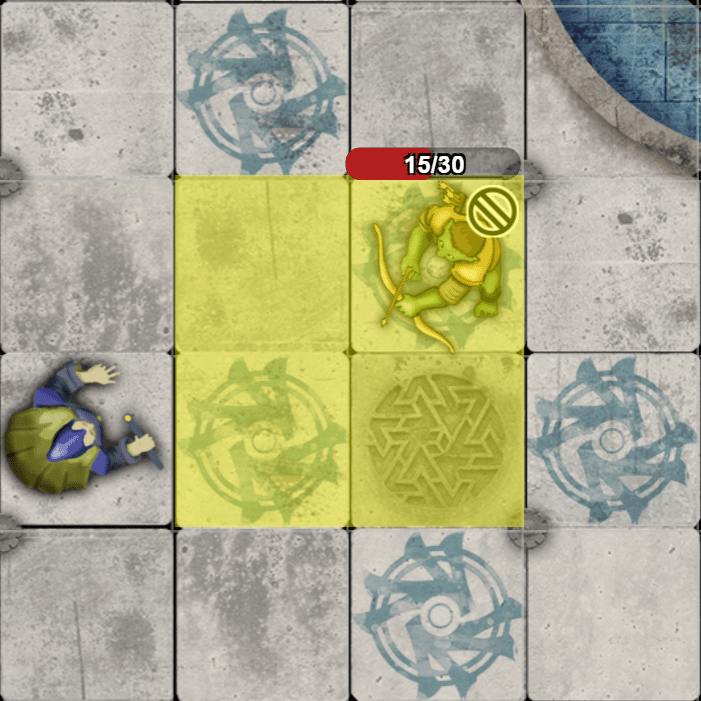
Who can Cast Mind Sliver in D&D 5e?
Using Tasha’s Cauldron of Everything as a guide, the Mind Sliver cantrip can be learned by three classes (Sorcerer, Warlock, and Wizard), four subclasses (Aberrant Mind Sorcerer, Arcana Cleric, Arcane Trickster Rogue, and Eldritch Knight Fighter), and two races (High Elf and Half-elf with the Moon Elf or Sun Elf Descent variation).
Classes that can Cast Mind Sliver in D&D 5e
Mind Sliver is a cantrip that can be chosen by Sorcerers, Warlocks, and Wizards. Mind Sliver can be used as early as level 1 because cantrips don’t take up a spell slot.
At level 1, warlocks have two cantrips, and at level 20, they have four. On the other hand, Wizards start at level 1 with three cantrips and end at level 20 with five.
But sorcerers have the most cantrips because they start with four at level one, which is the same number that Warlocks get at level 20, and end with six at level 20. In the table below, you can see these classes, where they come from, and their Spell Save DC.
| Classes that can cast Mind Sliver | Class Source | Spell Save DC |
| Sorcerer | Player’s Handbook, page 99 | 8 + your proficiency bonus + your Charisma modifier |
| Warlock | Player’s Handbook, page 105 | 8 + your proficiency bonus + your Charisma modifier |
| Wizard | Player’s Handbook, page 112 | 8 + your proficiency bonus + your Intelligence modifier |
Subclasses that can Cast Mind Sliver in D&D 5e
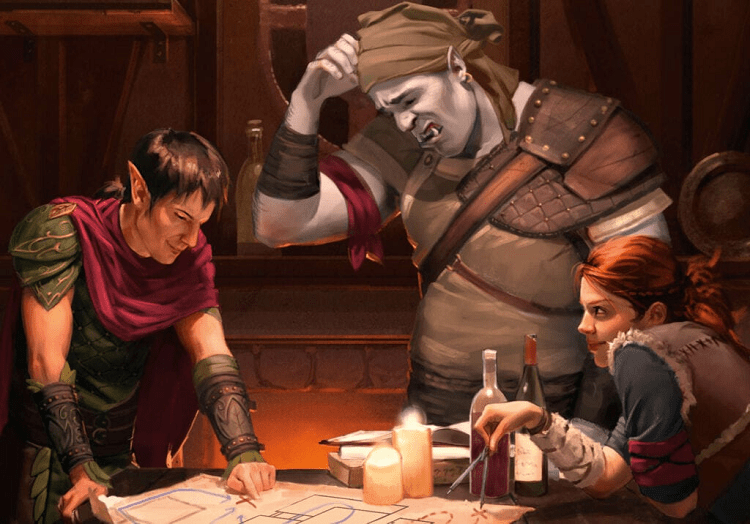
In D&D 5e, Mind Sliver is a cantrip that can be learned by the Aberrant Mind Sorcerer, the Arcana Cleric, the Arcane Trickster Rogue, and the Eldritch Knight Fighter.
In the table below, you can find information about each of these subclasses, such as its source, its parent class’s source, the Spell Save DC, and more.
| Subclasses that can cast Mind Sliver | Originating Class | Subclass Feature for Mind Sliver | Subclass Source | Class Source | Spell Save DC |
| Aberrant Mind | Sorcerer | Psionic Spells | Tasha’s Cauldron of Everything, page 66 | Player’s Handbook, page 99 | 8 + your proficiency bonus + your Charisma modifier |
| Arcana Domain | Cleric | Arcane Initiate | Sword Coast Adventurer’s Guide, page 125 | Player’s Handbook, page 56 | 8 + your proficiency bonus + your Wisdom modifier |
| Arcane Trickster | Rogue | Spellcasting | Player’s Handbook, page 97 | Player’s Handbook, page 94 | 8 + your proficiency bonus + your Intelligence modifier |
| Eldritch Knight | Fighter | Spellcasting | Player’s Handbook, page 74 | Player’s Handbook, page 70 | 8 + your proficiency bonus + your Intelligence modifier |
Because they have the Psionic Spells subclass feature, sorcerers with the Aberrant Mind sorcerous origin can replace an existing spell in their kit with a Divination or Enchantment spell from the Sorcerer, Warlock, or Wizard spell list when they level up.
If we base the rules on the Player Handbook alone, you cannot replace a cantrip when you level up; you can only replace spells level one or higher since the feature only changes to spells you have spell slots for.
Psionic Spells, on the other hand, says that you can replace a spell you already have with a spell of the same level. It does not say that the spells must require spell slots.
Even though cantrips are technically level 0 spells, they still have a level. So, you can replace a cantrip you already have with a different one. With this feature, you can use the Mind Sliver instead of an existing cantrip.
The Arcane Initiate subclass feature lets Clerics in the Arcana Domain use the Mind Sliver cantrip. In addition to giving them proficiency in Arcana skill checks, it lets them choose two cantrips from the Wizard spell list to keep. Mind Sliver is also on that list.
This feature doesn’t count these cantrips towards their total number of cantrips.
The Arcane Tricker Rogue and Eldritch Knight Fighter can get the Mind Sliver cantrip due to their added subclass feature to cast spells.
But at level 3, they can only choose between two cantrips. The Arcane Trickster Rogue starts with three cantrips, but one of them is always Mage Hand.
When they reach level 10, they only get one more cantrip. Therefore, you can get the Mind Sliver cantrip either at the start of level three or as the added cantrip at level ten.
Races that can Cast Mind Sliver in D&D 5e
High Elves have a trait called “Cantrip,” which lets them choose one “cantrip” spell from the Wizard spell list. Mind Sliver is on that list, so High Elves can choose it.
Half-elves who are descended from Moon Elves or Sun Elves can also get this cantrip through their race, but it depends on the player.
Instead of having the High Elf traits of Skill Versatility, Elf Weapon Training, and Cantrip as part of their race, these Half-elves can only choose one of these three traits as their Variant Feature.
So, a player can’t get Mind Sliver this way if they choose Skill Versatility or Elf Weapon Training instead of the Cantrip racial trait.
Here is a table with important information about these races.
| Races that can cast Mind Sliver | Racial Feature for Mind Sliver | Race Source | Spell Save DC |
| High Elf | Cantrip | Player’s Handbook, page 23 | 8 + your proficiency bonus + your Intelligence modifier |
| Half-elf (Variant; Moon Elf or Sun Elf Descent) | Cantrip (via Variant Feature) | Sword Coast Adventurer’s Guide, page 116 | 8 + your proficiency bonus + your Intelligence modifier |
Creative and Useful Ways to Use Mind Sliver in D&D 5e

You are right to think that Mind Sliver is just an assist spell, which is a spell meant to help someone else by making the enemy weaker.
I agree with you, and I think it’s a great help spell. It also does a little bit of psychic damage, but not much. But if you still don’t think Mind Sliver is great, here are a few creative reasons to pick up this cantrip in D&D 5e.
- Assisting another spellcaster
- Optimizing your Quickened Spells
- Optimizing the Bane spell
Assisting Another Spellcaster Using Mind Sliver in D&D 5e
Remember how I said that Mind Splinter is a great help spell? Let me give you some perspective to show you how useful it can be.
Mind Sliver subtracts 1d4 from a target’s saving throw, no matter what kind of ability it is. So far, there are up to 516 spells in the different sources for D&D 5e.
There are 516 spells, and 219 of them require the target to make a saving throw. These spells make up about 42% of all spells.
There’s a good chance that your friend who can cast spells has a spell in their bag that forces the person it hits to make a saving throw.
When you use Mind Sliver on a target, you are basically helping them make their spells work better. You also get a “you owe me” card to use against that person.
Optimizing Your Quickened Spells Using Mind Sliver in D&D 5e
Mind Sliver can help another spellcaster, but you can also use it to help yourself cast spells if you are at least a level 3 Sorcerer.
Mind Sliver is a spell that forces the target to make a saving throw. Do you have any other spells that do the same thing?
With this cantrip, you can make your spells work better. How? You need to use the features of your Metamagic class, especially the Quickened Spells option.
Since the Mind Sliver lasts until the end of the target’s turn, its effects usually wear off by the time it’s your turn again. Mind Sliver is an example of a spell that works.
Their saving throws are lowered by 1d4 points. But before it’s your turn again, your enemy will take theirs. That’s how combat rounds work.
Quickened Spell, on the other hand, changes the formula. For two sorcery points, you can change a spell’s casting time from one action to one action plus one action during that turn.
In D&D 5e, you can only cast a cantrip during your action if you cast a spell during your bonus action. In other words, you can’t use your action and bonus action to cast two spells of level 1 or higher at the same time.
In D&D 5e, you can do bonus actions either before or after your main action. What does Mind Sliver have to do with this?
With Quickened Spell, you can use your bonus action to cast a levelled spell. You can also use your action to cast Mind Sliver. Then you need to cast Mind Sliver first, then take your bonus action.
With the Quickened Spell metamagic, you can use a bonus action to cast a spell like Thunderwave, which takes one action to cast.
Then, you decide to use Mind Sliver for your action. The people Thunderwave hits have to make a Constitution saving throw.
If you cast Mind Sliver first and then Thunderwave after that, your target’s saving throw will be lowered by 1d4 each time.
Optimizing the Bane Spell Using Mind Sliver in D&D 5e

Bane is a spell that can benefit greatly from the Mind Sliver cantrip. For those who don’t know, the Bane spell is an enchantment spell of level one with a casting time of one action, a range of 30 feet, and a concentration-based duration of one minute.
It needs the verbal, physical, and material parts, and the material part is a drop of blood (per usual, you can use your arcane focus to skip the drop of blood).
When you cast the Bane spell, you have to pick three creatures and make them make Charisma saving throws. If they fail, their other saves or attack rolls take a 1d4 hit for as long as the spell is in effect.
Bane and Mind Sliver can be used together to make someone lose 2d4 on their next saving throw. Compared to the usual effect, this one is a big step up.
If you want to use these two spells together, you should cast Bane first and focus on it.
Then, on your next turn, you can cast Mind Sliver, which doesn’t require concentration. If you manage to do both of these things, congratulations! The next saving throw your target makes has 2d4 taken away from it.
If you are a Sorcerer with Metamagic, you can also use Quickened Spell on Bane, but I wouldn’t recommend it. Your sorcery points are likely better spent on something else.
Since Bane can last for up to ten rounds, you don’t have to worry about the order of your turns. But why not? If time is of the essence, why not? Always take a look at what’s going on.
FAQs
Does Mind Sliver Stack in D&D 5e?
No, in D&D 5e, the effects of more than one Mind Sliver cantrip do not add up. According to the “Combining Magical Effects” section on page 205 of the Player’s Handbook, the effects of the same spell cast more than once do not add up. Instead, the “most powerful” effect will take precedence over the others. Bane and other spells that make saving throws harder will still work with Mind Sliver.
Do Mind Sliver and Bane stack in D&D 5e?
Yes, in D&D 5e, the effects of Mind Splinter and Bane add up. In the same place (see the question above), it says that the effects of different spells will add up.
So, if you use Mind Sliver on someone who is under the effects of Bane, their saving throws will be lowered by a total of 2d4 points. To learn more, read the section above called “How to Use Mind Sliver to Make the Bane Spell Work Better in D&D 5e.”
Which is Better, Mind Sliver vs Vicious Mockery in D&D 5e?
How you punish your enemy depends on what you want to do. Mind Sliver is the right choice if you want to make it more likely for them to fail their saving throws.
Choose Vicious Mockery if you want to make it harder for them to hit you. Mind Sliver does more damage, but Vicious Mockery makes it more likely that you won’t take as much damage from enemies.
Which is Better, Mind Sliver vs Frostbite in D&D 5e?
It depends on what kind of punishment you want to give, just like with Vicious Mockery. Frostbite does the same amount of damage as Mind Sliver, but it makes the target’s attack roll with their weapon worse.
Mind Sliver makes it more likely for your enemies to fail their saving throws, and Frostbite makes it more likely for them to fail their attack rolls with their weapons. I would choose the first one, though, because Frostbite only changes the attack rolls of weapons. If your enemy doesn’t have a weapon, the effect won’t help.


